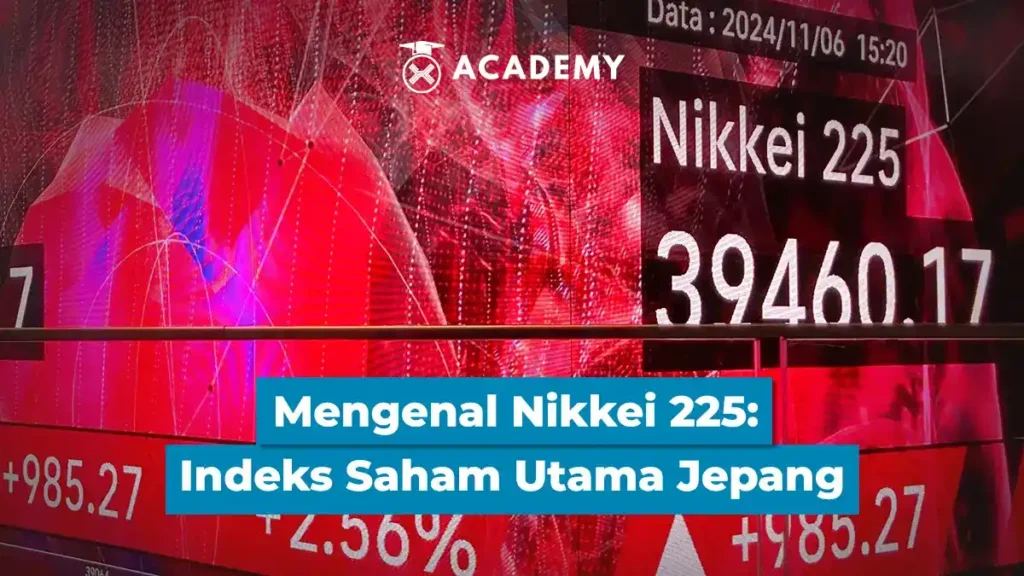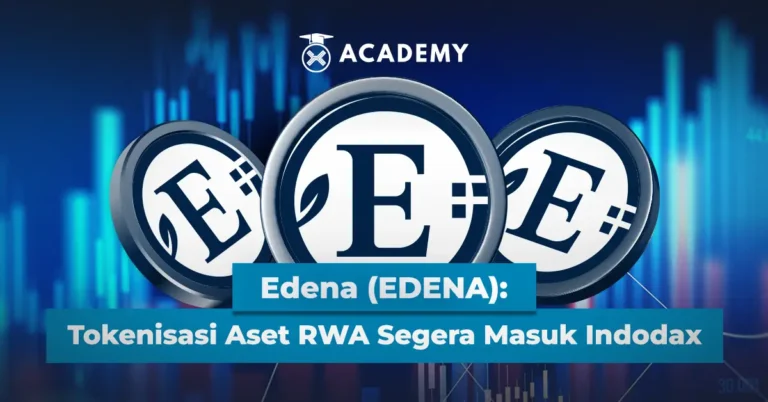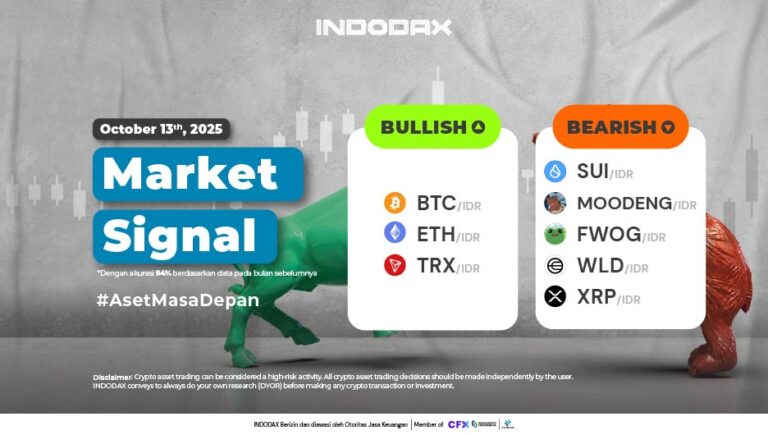A stock index is an indicator that reflects the movement of stock prices of a group of companies listed on the stock exchange.
The main function of this index is to measure the performance of the stock market or a particular sector, which provides an overview of market trends and economic conditions.
The Nikkei 225 is a stock index consisting of 225 large companies listed on the Tokyo Stock Exchange. This index is very important because it reflects the performance of the Japanese stock market, which is one of the largest economies in the world.
The Nikkei 225 is used by international investors to understand the condition of the Japanese economy and as a reference in making investment decisions in the Japanese market.
Also read: Why is the Stock Index Important in the World of Investment?
What is Nikkei 225?

Nikkei stands for Japan’s Nikkei 225 Stock Average, which is the leading and most respected stock index in Japan.
It is a price-weighted index consisting of the 225 largest blue-chip companies in Japan traded on the Tokyo Stock Exchange. The Nikkei is equivalent to the Dow Jones Industrial Average (DJIA) in the United States.
Formerly known as the Nikkei Dow Jones Stock Average (from 1975 to 1985), the index is now named after the Nihon Keizai Shimbun or Japanese Economic Newspaper, better known as Nikkei, which sponsors the calculation of the index.
The index has been calculated since September 1950, with retroactive dates to May 1949. The Nikkei 225 index includes large companies representing a wide range of economic sectors, including automotive, technology, financials, and manufacturing.
Some of the well-known companies listed on the index include Toyota Motor Corporation (automotive), Sony Corporation (technology), and Canon Incorporated (electronics).
This index provides a broad overview of the performance of leading companies in Japan, reflecting the economic and stock market conditions in the country.
The Nikkei was established as part of Japan’s post-World War II reconstruction and industrialization efforts.
The stocks that make up the index are ranked based on share price, rather than market capitalization as is common in most indexes.
The valuation is done in Japanese yen. The composition of the Nikkei is reviewed every September, and any necessary changes are made in October.
Also read : What is a Stock GMS? An Essential Guide for Shareholders
How to Calculate the Nikkei 225
The Nikkei 225 is calculated using a price-weighted average method. This means that stocks with higher prices will have a greater influence on the movement of the index.
To calculate it, the stock prices of the 225 companies listed in the index are added together, then divided by a number called a “divisor”.
This divisor is used to adjust for changes in the composition of the index, such as stock splits or price changes that are not directly related to market performance.
Because the calculation method is based on stock prices, companies with higher stock prices will have a greater influence on changes in the value of the Nikkei 225.
For example, if a large company such as Toyota or Sony has a significant surge in stock price, it can affect the overall value of the index even though other companies in the index may experience smaller price movements.
The main difference between the Nikkei 225 and other stock indexes, such as the S&P 500, lies in the calculation method. The S&P 500 uses a market-cap weighted approach.
In this case, companies with larger market values ??will have a greater impact on the movement of the index. In contrast, in the Nikkei 225, even though companies have large market values, their influence is more determined by their stock prices.
Therefore, changes in the stock prices of high-priced companies can cause greater movements in the Nikkei 225 compared to market-cap-based indices such as the S&P 500.
Also Read: Top 7 American Blue Chip Stocks with the Largest Dividends
Why is the Nikkei 225 Important for Financial Markets?
The Nikkei 225 is considered a leading indicator of the health of the Japanese economy because it covers the 225 largest companies in the country. The performance of this index provides an overview of the condition of important sectors such as automotive, technology, and finance in Japan.
Investors and traders use the Nikkei 225 to analyze Japanese market trends. This index helps in identifying the direction of the market so that investors can make decisions based on domestic and global economic developments.
On the other hand, the movement of the Nikkei 225 can affect international stock markets, especially in Asia. Since Japan is a large economy, the fluctuation of this index is often a reference for investment decisions in the global market.
How to Trade and Invest in Nikkei 225?
Some of the instruments that can be used for trading and investing in Nikkei 225 are as follows:
1. Trading through futures contracts
Futures contracts help traders to buy or sell Nikkei 225 in the future at a price agreed upon today. This provides an opportunity to profit from index movements without having to buy shares directly.
2. Investing through ETFs that track Nikkei 225
Exchange-Traded Funds (ETFs) that track Nikkei 225 help investors to invest in the index as a whole, providing diversification at a lower cost than buying individual stocks.
3. Purchasing shares of companies in the index
One way to invest directly is to buy shares of companies listed in the Nikkei 225 index, such as Toyota, Sony, and Canon.
Meanwhile, as a trading strategy with the Nikkei 225, traders can take advantage of the Nikkei 225 movement with strategies such as following short-term or long-term trends.
For example, using technical analysis to identify buy or sell points based on price patterns or technical indicators.
Short-term trading can be profitable if there is high market volatility, while long-term investment is more suitable for those who want to take advantage of Japan’s economic growth.
However, as with trading on other indices, there are risks that can occur in trading the Nikkei 225, including price volatility, currency risk, and global economic uncertainty.
Therefore, risk management is very important, such as using stop-losses to reduce potential losses and ensuring portfolio diversification to protect against sudden market movements.
External factors such as changes in Japanese economic policy or global events can affect the movement of the Nikkei 225 so it is important to keep up with economic news.
Also Read: Getting to Know the Difference Between GOOG & GOOGL Stocks from Google
Study Example: Nikkei 225 in Action

Traders and investors often use the Nikkei 225 to analyze Japanese market sentiment and identify potential investment opportunities.
For example, if the Nikkei 225 shows a consistent uptrend, it can be an indicator that the Japanese economy is on the path to recovery or expansion, attracting investors to buy stocks in the index.
Conversely, if the index experiences a significant decline, it can be a sign of economic stress or market uncertainty that makes investors cautious in making decisions.
Many traders also use technical analysis on the Nikkei 225 price movement to plan buy or sell positions.
On the other hand, during times of economic crisis, such as during the 2008 global recession or the Japanese economic crisis in the 1990s, the Nikkei 225 serves as a leading indicator to measure the impact of the crisis on the Japanese economy.
During such periods, the index’s movements can reflect market fear and uncertainty that hit key sectors, especially among the large companies listed on it.
For example, during a monetary crisis or tighter policies from the Bank of Japan, the Nikkei 225 will often fall sharply as investors panic-sell their stocks, reflecting the unstable economic conditions.
Smart investors will use these index declines as an opportunity to buy stocks at lower prices, if they are confident in a long-term recovery.
Conclusion
So, that was an interesting discussion about Getting to Know the Nikkei 225: Japan’s Main Stock Index that you can read in full at the Crypto Academy at INDODAX Academy.
In conclusion, the Nikkei 225 is a leading indicator that shows the health of the Japanese stock market, making it an important tool in understanding national and regional economic trends.
As one of the oldest and most respected stock indexes in Asia, the Nikkei 225 also serves as a barometer of global market sentiment.
This index offers valuable insights for investors and traders in identifying opportunities in the Japanese market, both through short-term trading strategies and long-term investments.
By understanding the movement of the Nikkei 225, investors can make more accurate decisions to optimize their portfolios.
For additional information, INDODAX will soon offer a new investment option in the form of stocks from the United States (US).
Through this feature, you can not only invest in crypto assets, but also have access to more than 50 US stocks using one INDODAX account integrated in the same application.
In closing, understanding the Nikkei 225 in both local and global contexts is essential to support wiser investment decisions.
However, investors must still be aware of the risks involved and conduct in-depth analysis before making decisions in the stock market.





 Polkadot 10.27%
Polkadot 10.27%
 BNB 3.13%
BNB 3.13%
 Solana 4.92%
Solana 4.92%
 Ethereum 2.43%
Ethereum 2.43%
 Cardano 1.79%
Cardano 1.79%
 Polygon Ecosystem Token 2.16%
Polygon Ecosystem Token 2.16%
 Tron 2.90%
Tron 2.90%
 Market
Market


